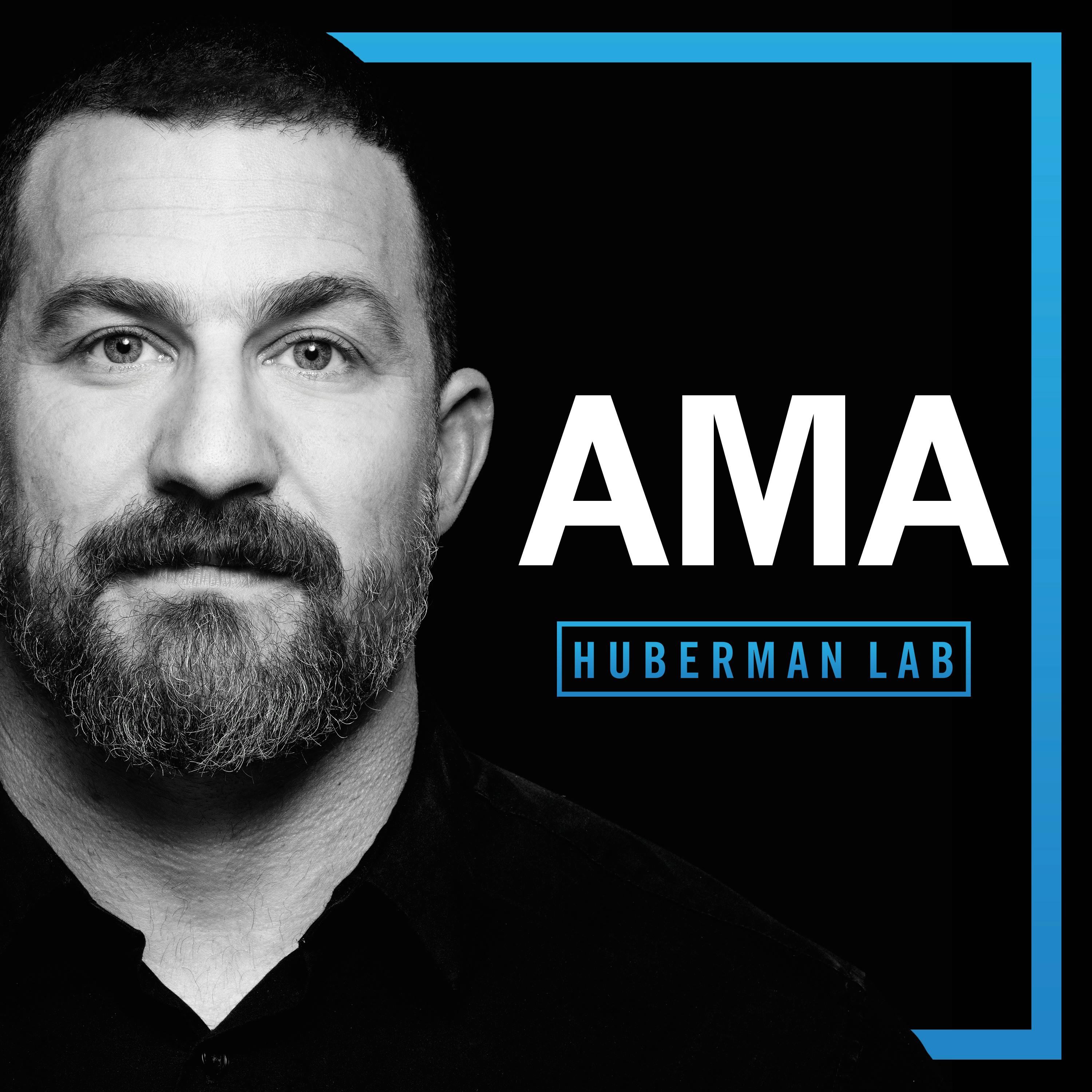
March 24, 2023 • 23min
AMA #5: Intrusive Thoughts, CGMs, Behavioral Change, Naps & NSDR
Huberman Lab

Key Takeaways
- Intrusive thoughts can be categorized into two main types:
- Thoughts that are merely repetitive and distracting but not disturbing in content
- Thoughts that are both intrusive and disturbing in content
- For repetitive but non-disturbing thoughts, the best approach is to anchor your attention to external stimuli and practice focusing on single tasks
- For disturbing intrusive thoughts, the most effective strategy is to write out the thoughts in detail to process and diminish their emotional impact
- Mindfulness meditation can be a powerful tool for improving focus and reducing intrusive thoughts
- Getting sufficient REM sleep is crucial for processing traumatic experiences and reducing intrusive thoughts
- True Obsessive Compulsive Disorder (OCD) is characterized by compulsions that increase anxiety rather than relieve it
- The 30-day dopamine reset recommended by Dr. Anna Lembke for addictions may not directly apply to thought-based issues
Introduction
In this Ask Me Anything (AMA) episode, Dr. Andrew Huberman addresses a question about strategies for abstaining from addictive thoughts and narratives. This topic was inspired by a previous discussion with Dr. Anna Lembke about dopamine resets for substance and behavioral addictions. Dr. Huberman provides a comprehensive analysis of intrusive thoughts, their nature, and evidence-based approaches to managing them.
Topics Discussed
Defining Thoughts and OCD (00:02:00)
Dr. Huberman begins by clearly defining Obsessive Compulsive Disorder (OCD) to distinguish it from colloquial usage:
- True OCD: A condition where engaging in compulsive behaviors increases anxiety rather than relieving it
- Colloquial "OCD": Being particular or perfectionistic, but finding relief through completing tasks
He then breaks down the components of neural functioning:
- Sensations: Conversion of external stimuli into neural signals
- Perceptions: Interpretation of sensory information
- Emotions: Mind-body experiences related to neuromodulators
- Behaviors: Physical actions
- Thoughts: Internal perceptions that can include past, present, or future data
Types of Intrusive Thoughts (00:10:01)
Dr. Huberman identifies two main categories of intrusive thoughts:
- Repetitive but non-disturbing thoughts:
- Example: A song stuck in your head
- Strategy: Anchor thoughts to external stimuli and activities
- Disturbing intrusive thoughts:
- Often related to trauma or deeply upsetting experiences
- Strategy: Write out thoughts in detail to process and reduce emotional impact
Strategies for Managing Non-Disturbing Intrusive Thoughts (00:12:01)
For thoughts that are merely repetitive but not disturbing in content, Dr. Huberman recommends:
- Mindful meditation:
- Practice focusing on a single point (e.g., breath, "third eye" center)
- Even short 5-10 minute daily sessions can improve focus
- Research by Dr. Wendy Suzuki supports these benefits
- Engaging in focused activities to draw attention away from intrusive thoughts
Addressing Disturbing Intrusive Thoughts (00:14:02)
For thoughts that are both intrusive and disturbing, Dr. Huberman explains:
- These thoughts often function like trauma, defined as events that fundamentally change nervous system functioning
- The most effective approach is to get very close to the trauma rather than avoid it
- Journaling in detail about the intrusive thoughts is highly recommended:
- Use complete sentences to provide structure
- Write out as much detail as possible about the thought and related experiences
- This process can reduce both the emotional impact and frequency of intrusive thoughts
Case Study: Overcoming a Superstition (00:16:02)
Dr. Huberman shares a personal example of overcoming a "knock on wood" superstition:
- The compulsion became internalized and more frequent over time
- The effective strategy was to write down the worst possible outcome he was concerned about
- This approach helped identify the underlying fear and reduce its power
The Role of Sleep in Processing Intrusive Thoughts (00:18:02)
Dr. Huberman emphasizes the importance of sleep, particularly REM sleep, in managing intrusive thoughts:
- Sufficient REM sleep is crucial for removing the emotional load of traumatic experiences
- He directs listeners to various Huberman Lab resources on improving sleep quality
Summary of Strategies (00:20:03)
Dr. Huberman recaps the main approaches for different types of intrusive thoughts:
- For true OCD: Seek professional help from a psychiatrist
- For non-disturbing repetitive thoughts:
- Practice focusing attention on other things
- Use mindfulness meditation to improve general focus
- For disturbing intrusive thoughts:
- Write out thoughts in detail using complete sentences
- Repeat the writing process as needed to diminish emotional impact
Introduction to Huberman Lab Premium (00:22:03)
Dr. Huberman concludes by introducing the Huberman Lab Premium subscription:
- Purpose:
- Support the standard Huberman Lab podcast
- Fund research on human subjects for mental health, physical health, and performance
- Features:
- Access to full AMA episodes
- Ability to submit questions for future AMAs
- Exclusive transcripts and protocols
- Pricing: $10 per month or $100 for a full year
- Research funding boost: The Tiny Foundation will match all funds raised for research through the premium channel
Conclusion
This AMA episode provides a comprehensive framework for understanding and managing intrusive thoughts. Dr. Huberman emphasizes the importance of distinguishing between different types of intrusive thoughts and tailoring strategies accordingly. For non-disturbing repetitive thoughts, the focus is on improving attention control through mindfulness and engaging activities. For disturbing intrusive thoughts, the key is to process them thoroughly through detailed writing exercises. The episode also highlights the crucial role of quality sleep in managing intrusive thoughts and trauma. By offering these evidence-based approaches, Dr. Huberman equips listeners with practical tools to address a common and often distressing mental health challenge.







